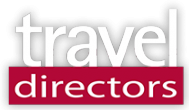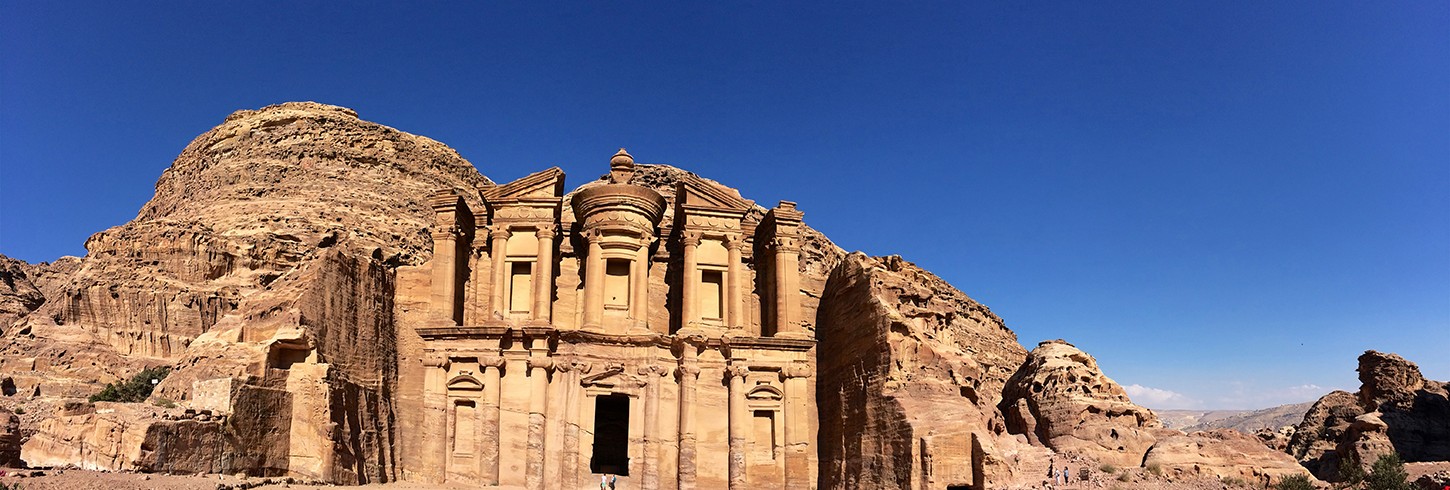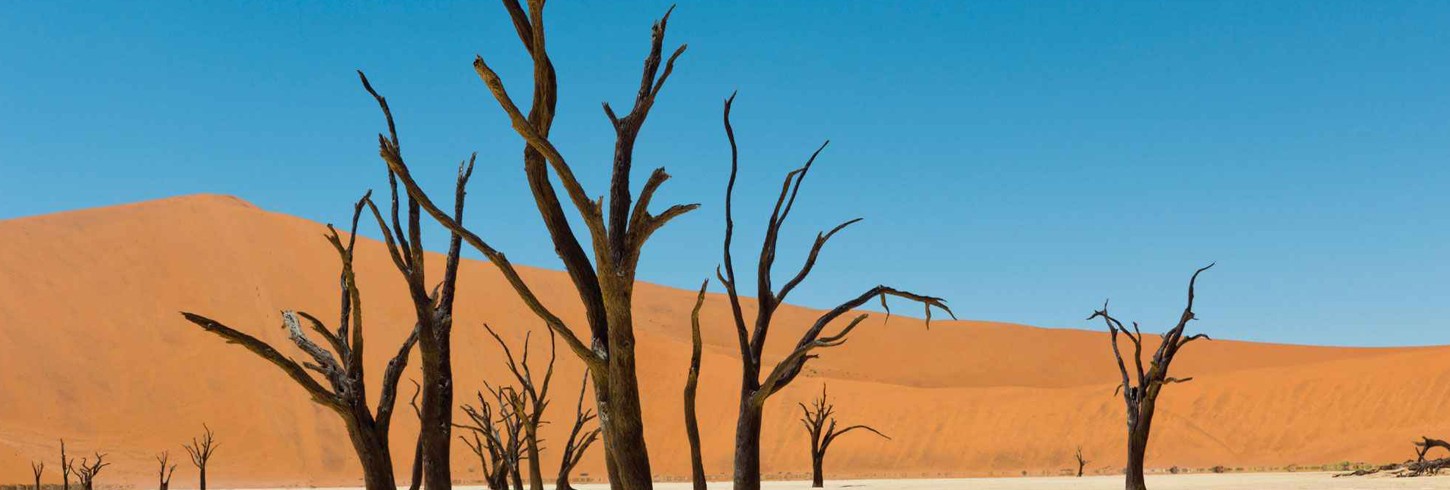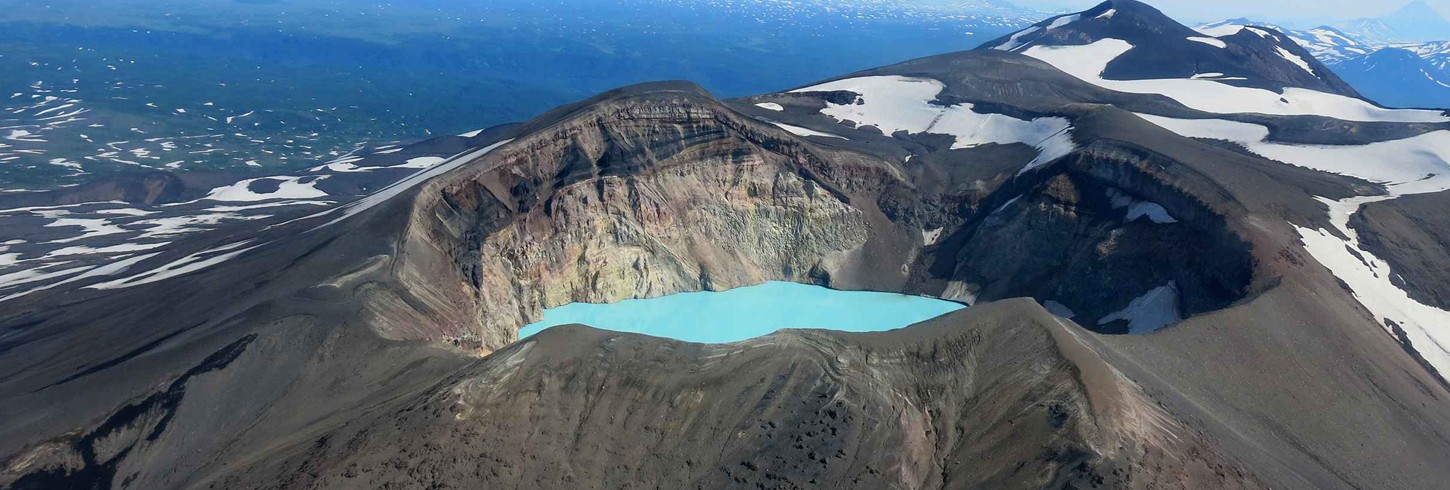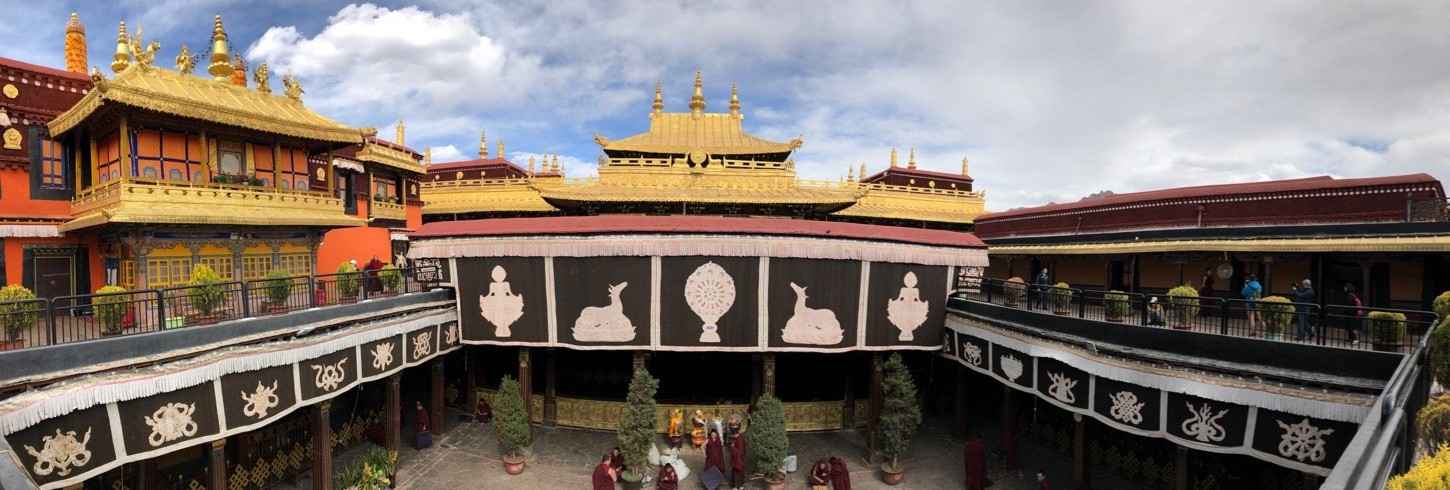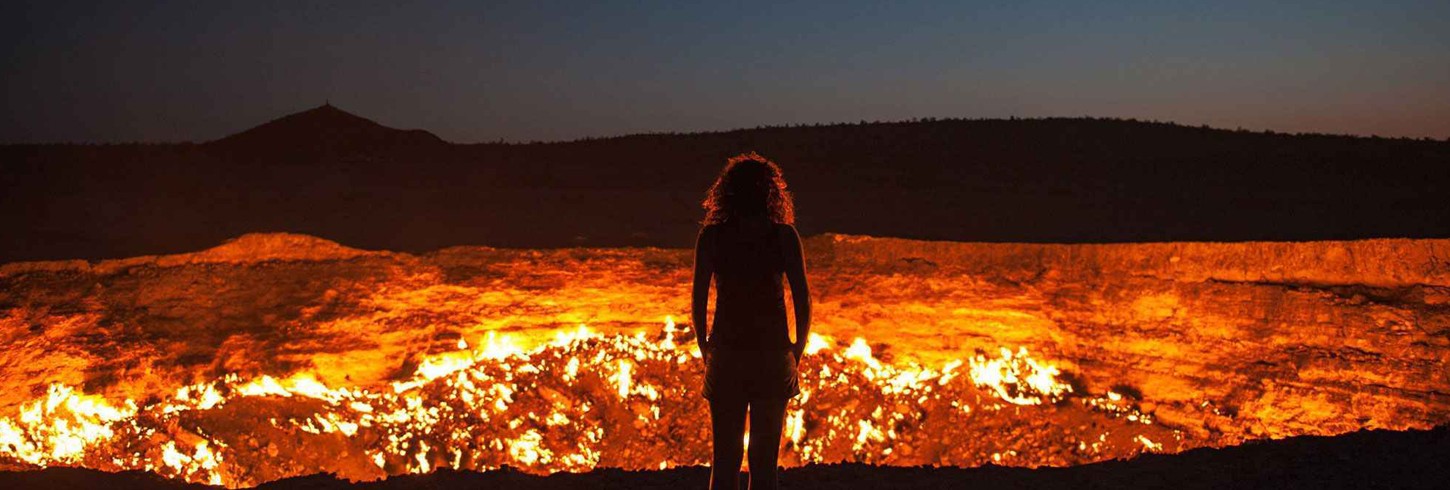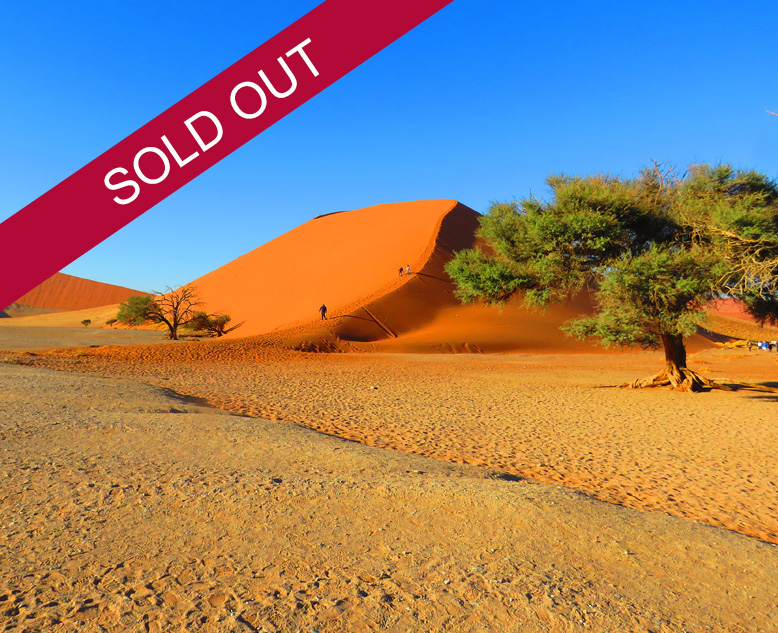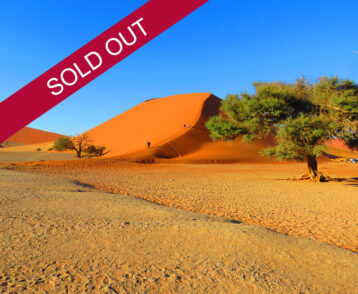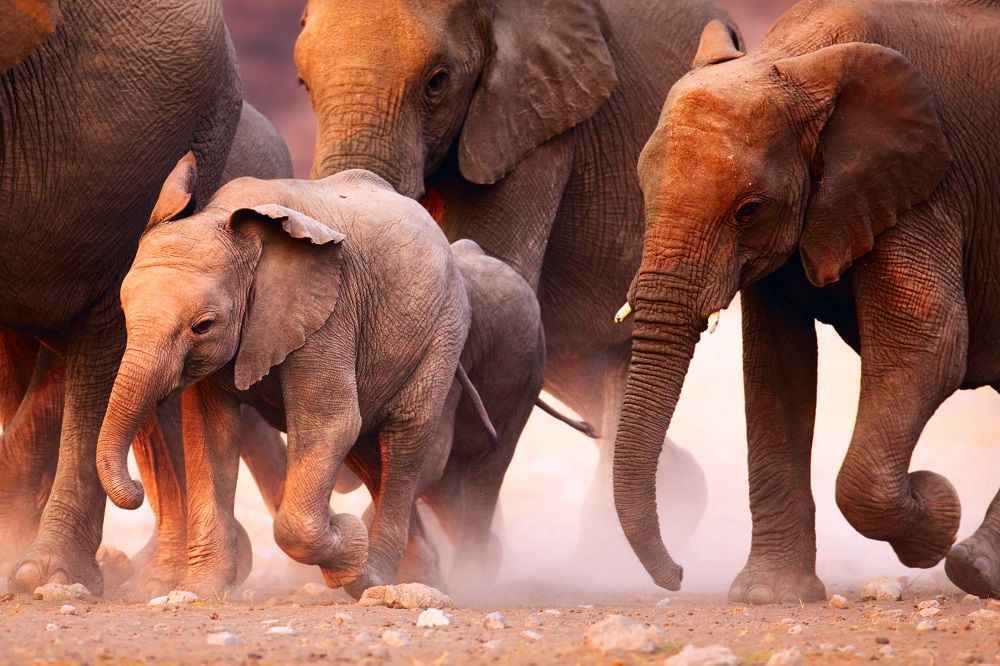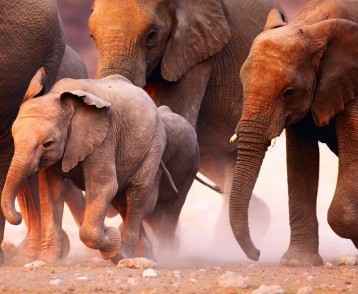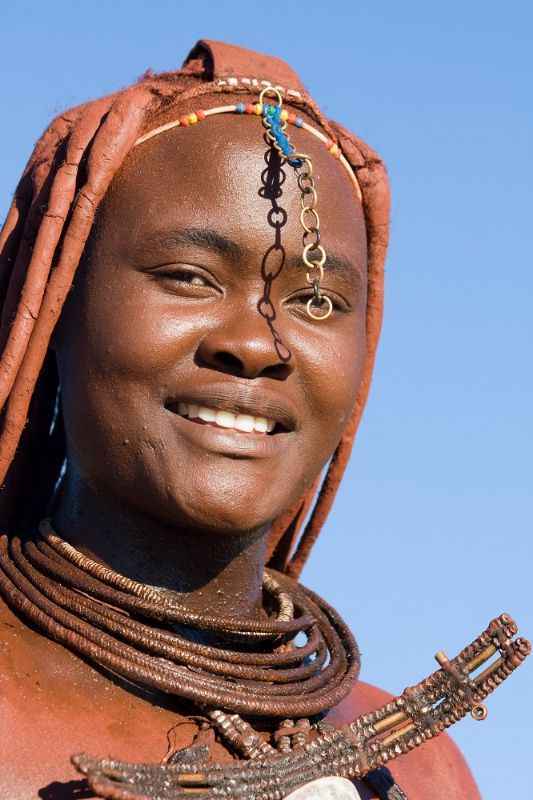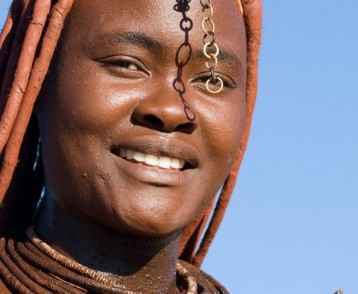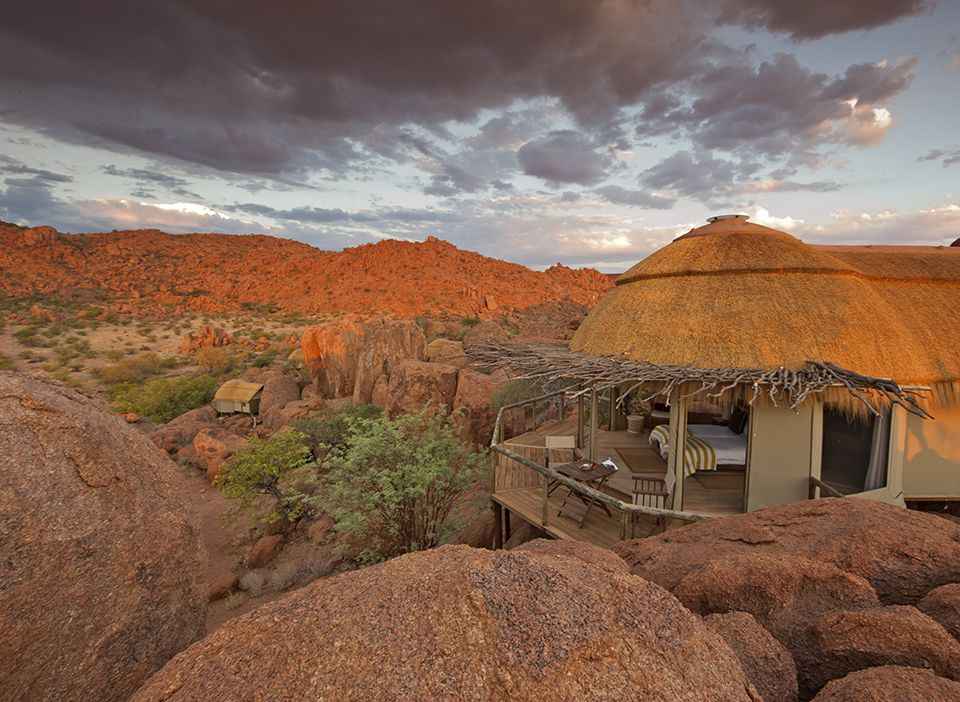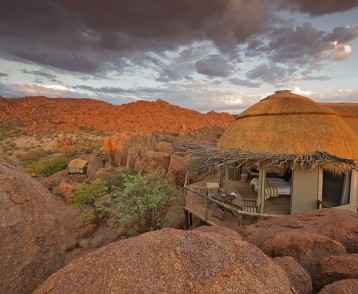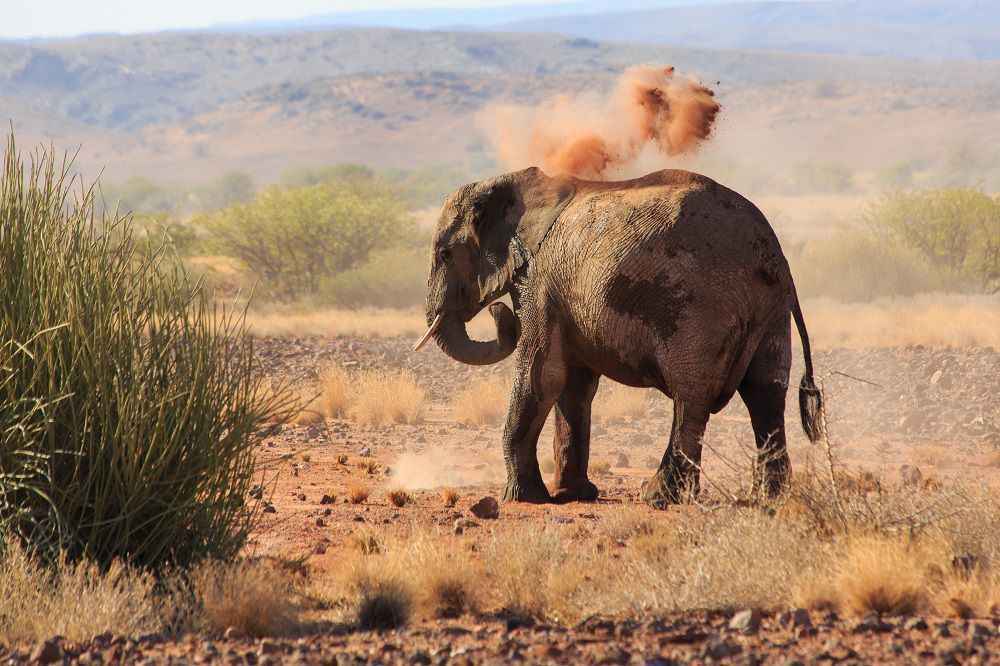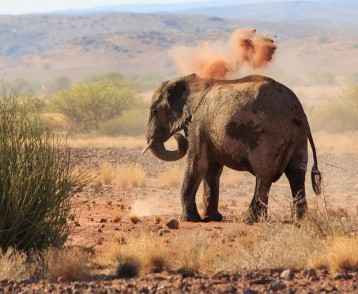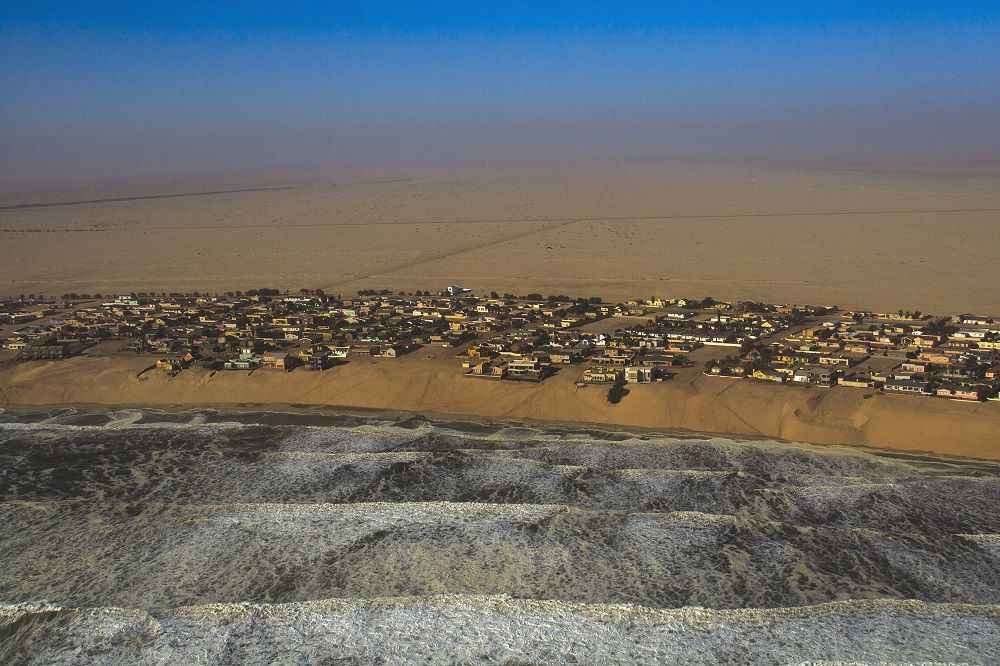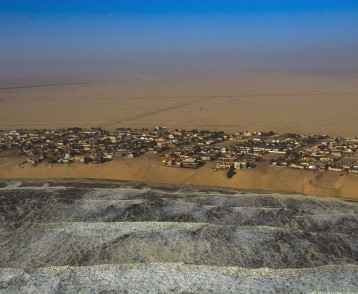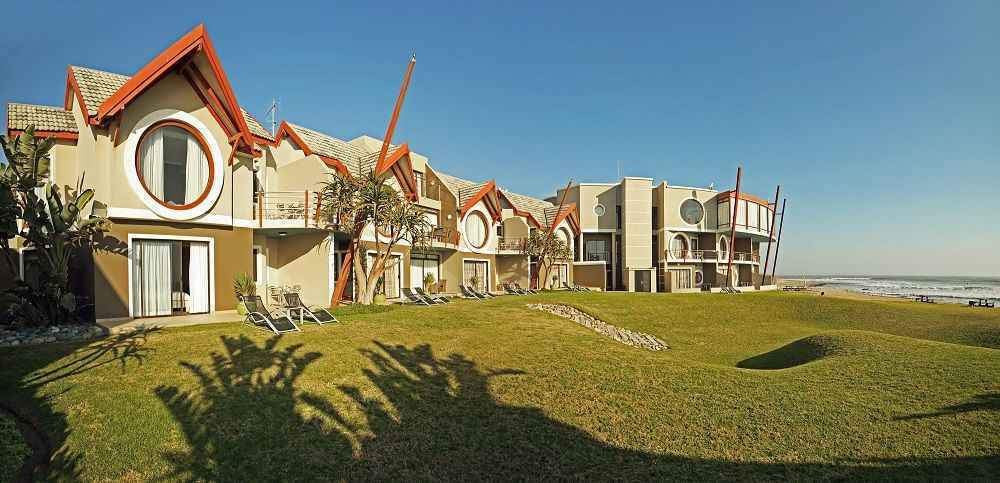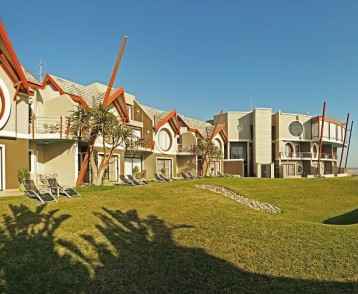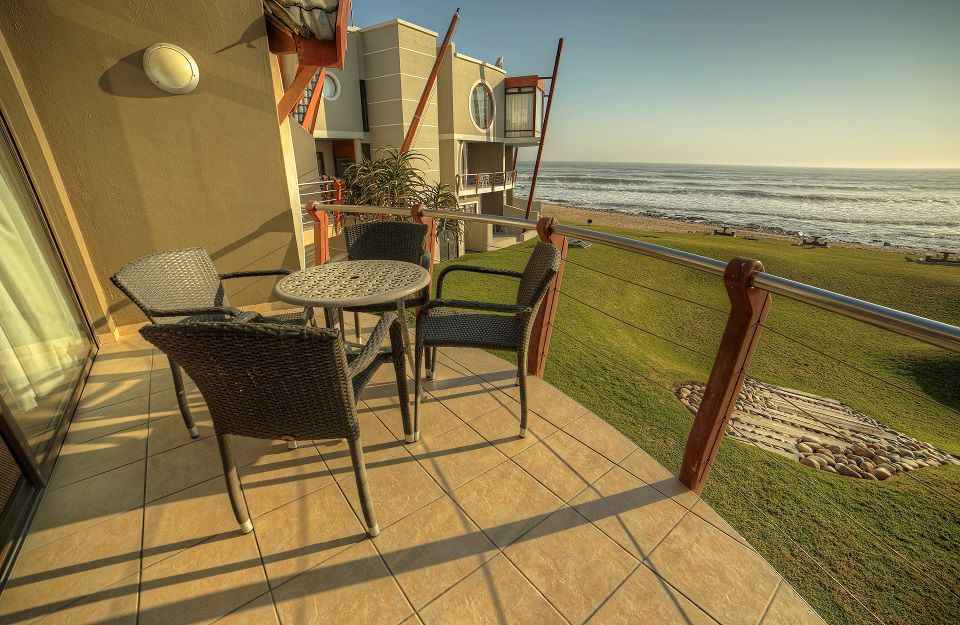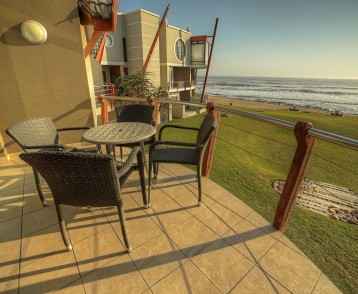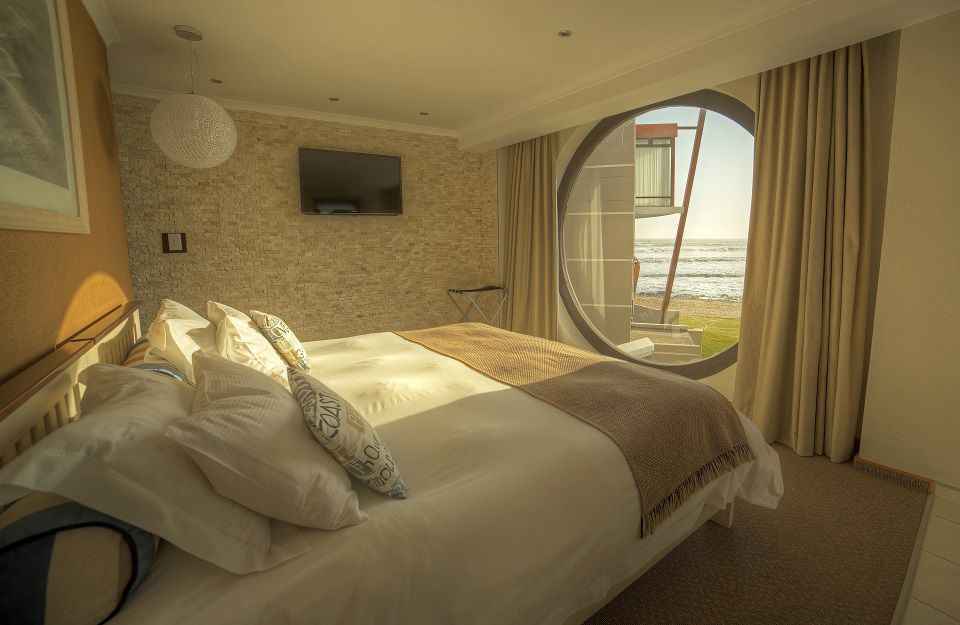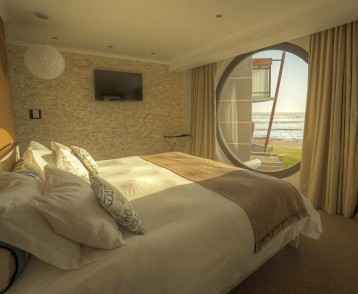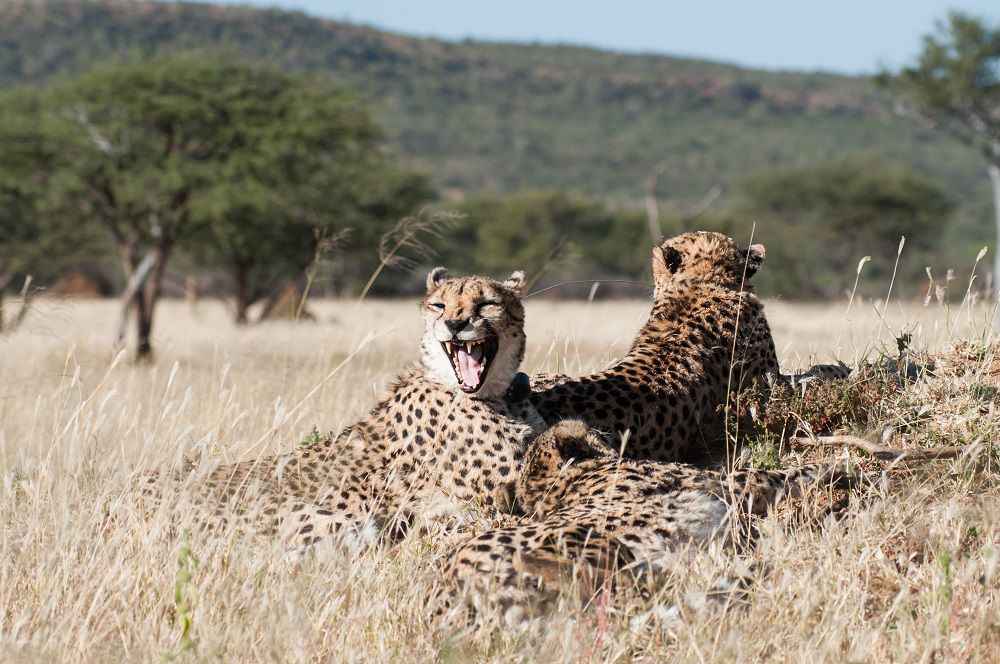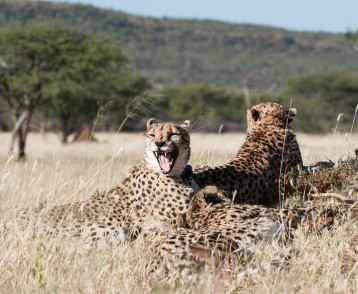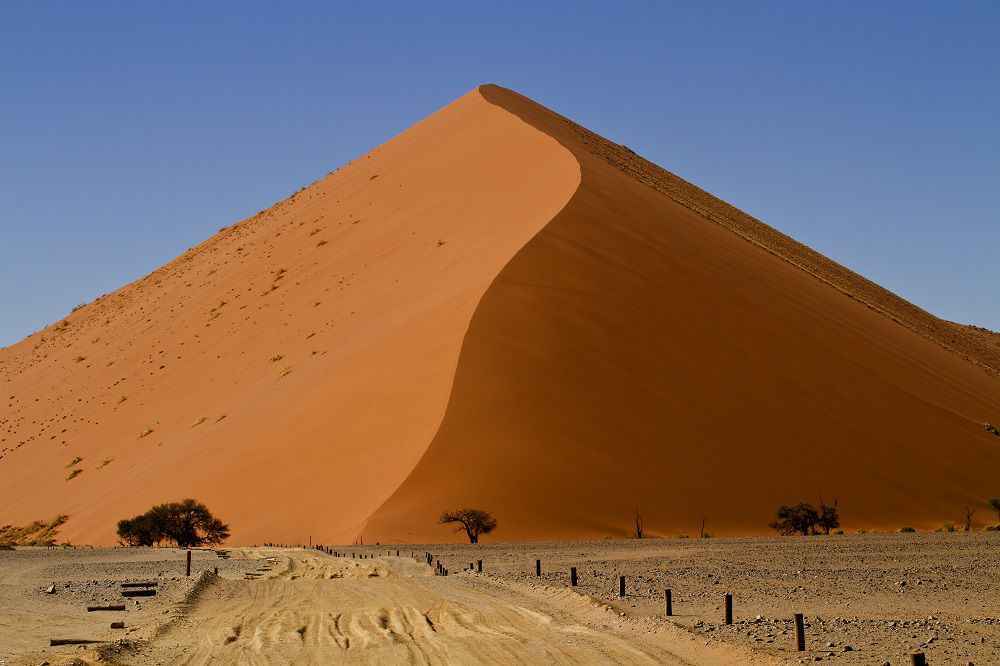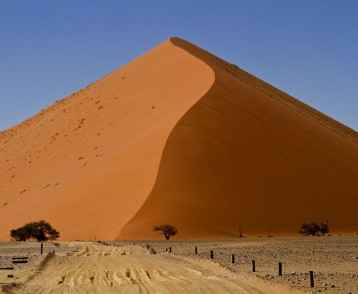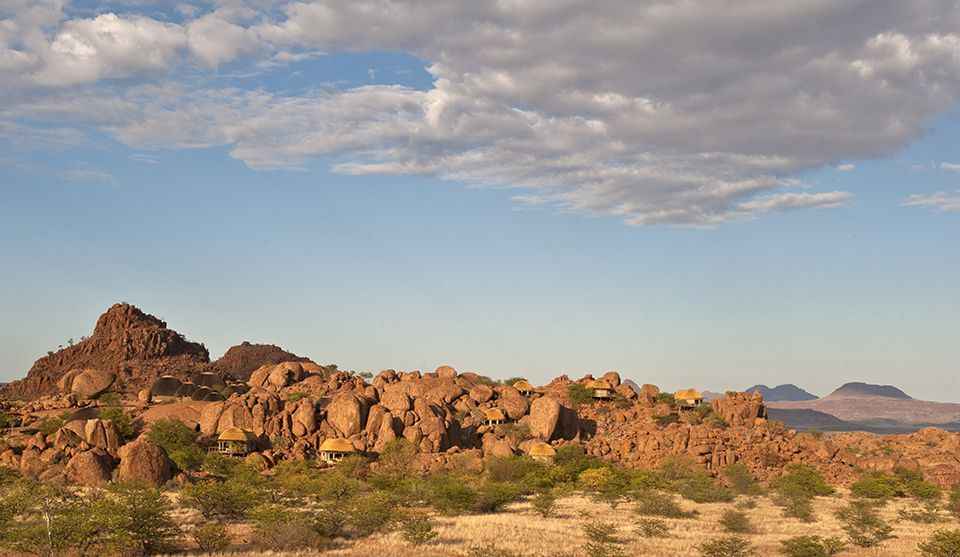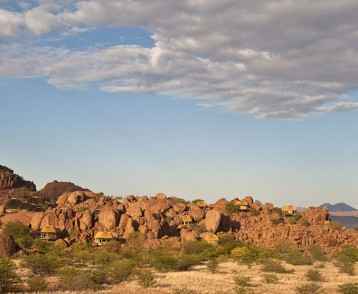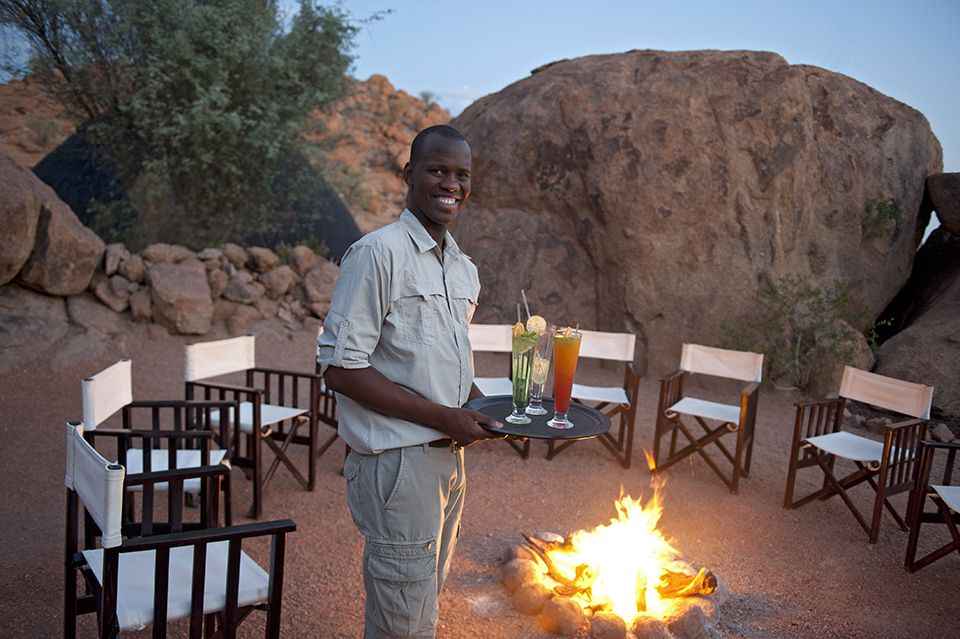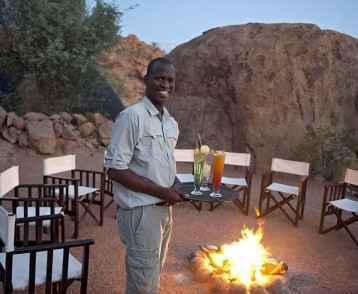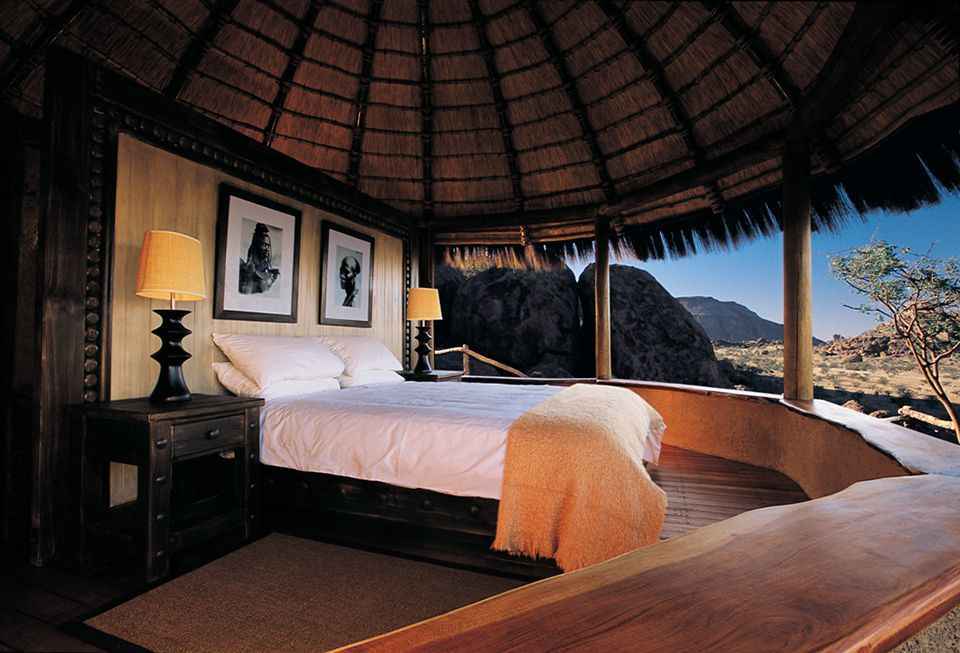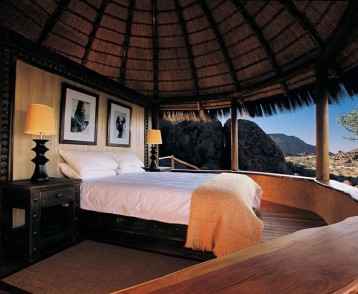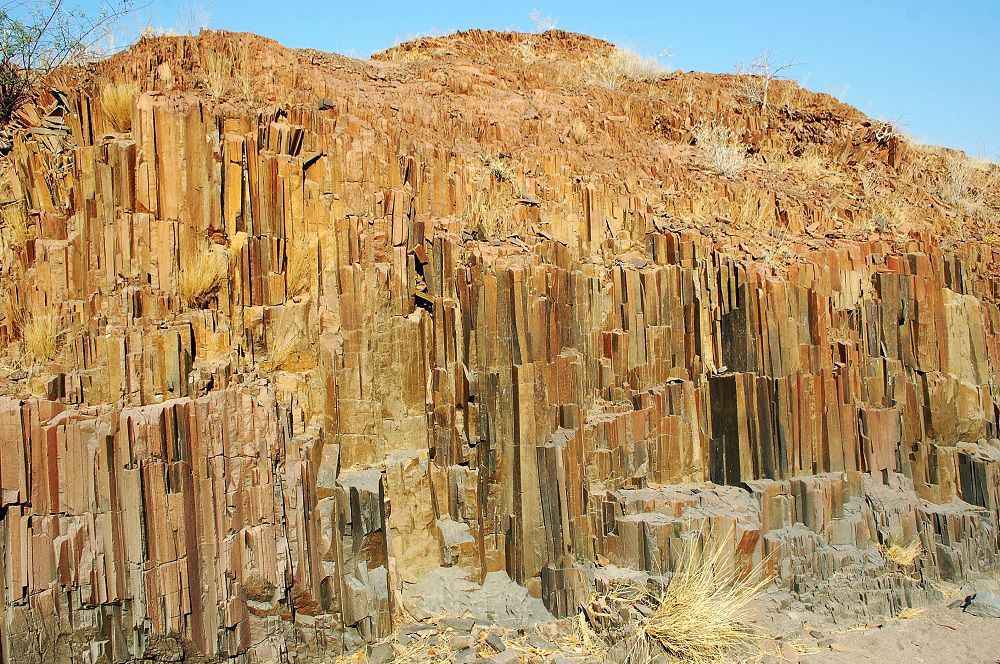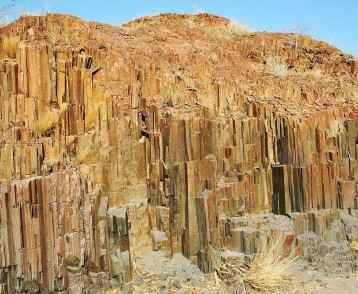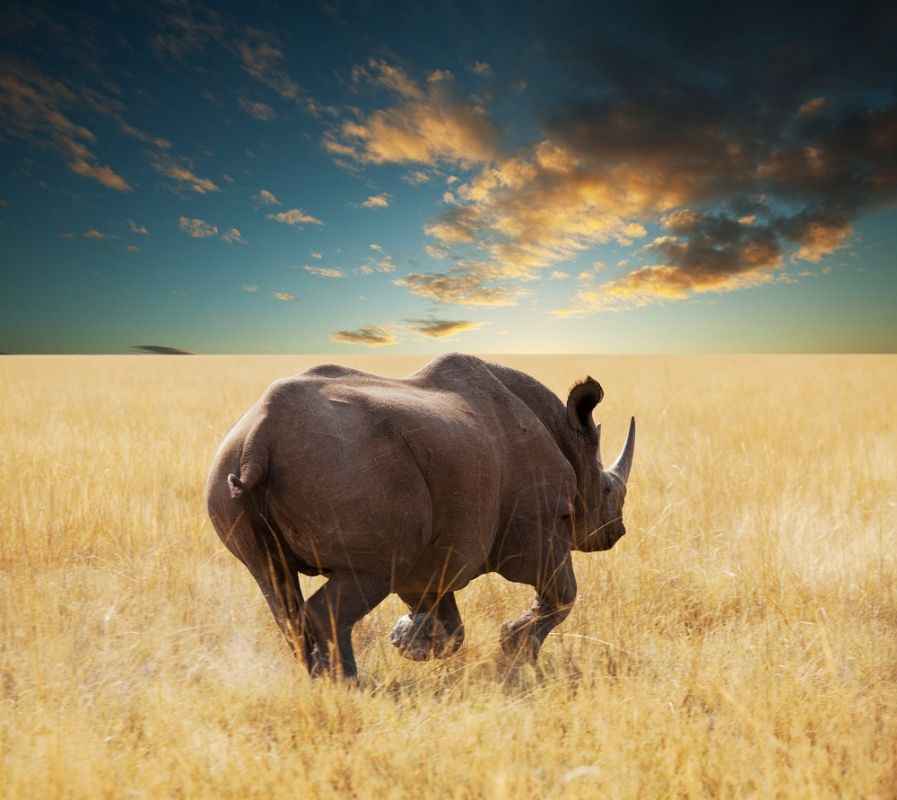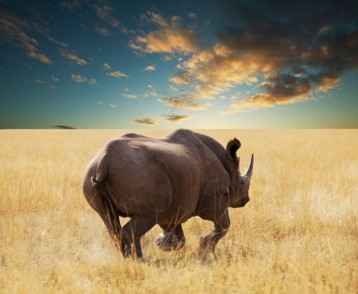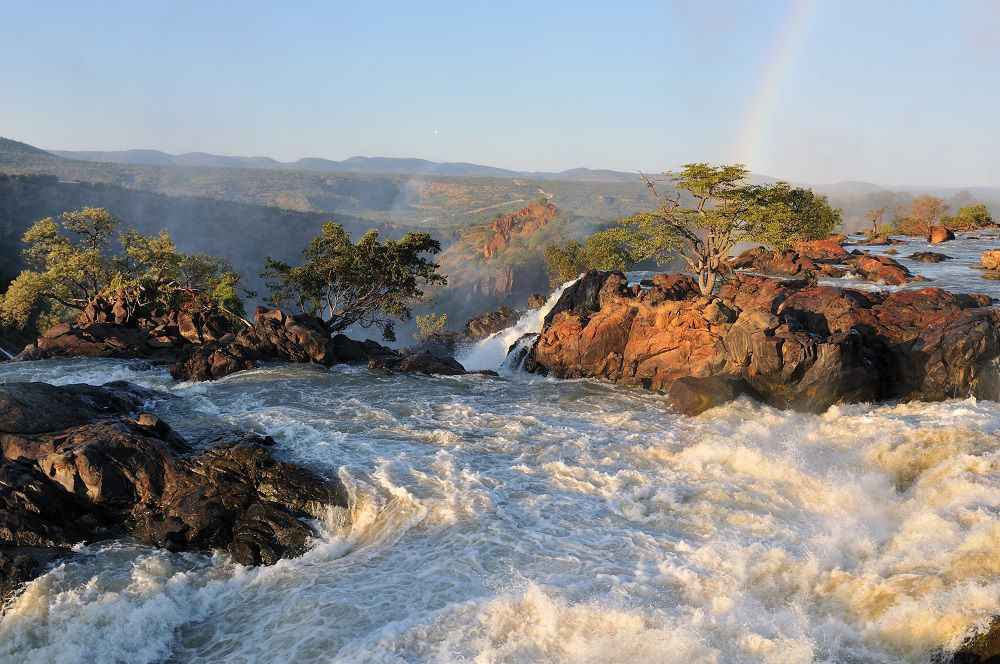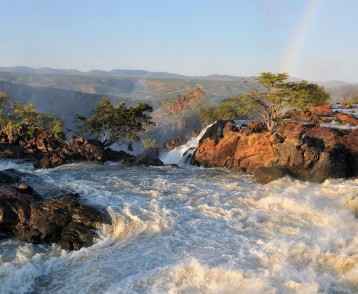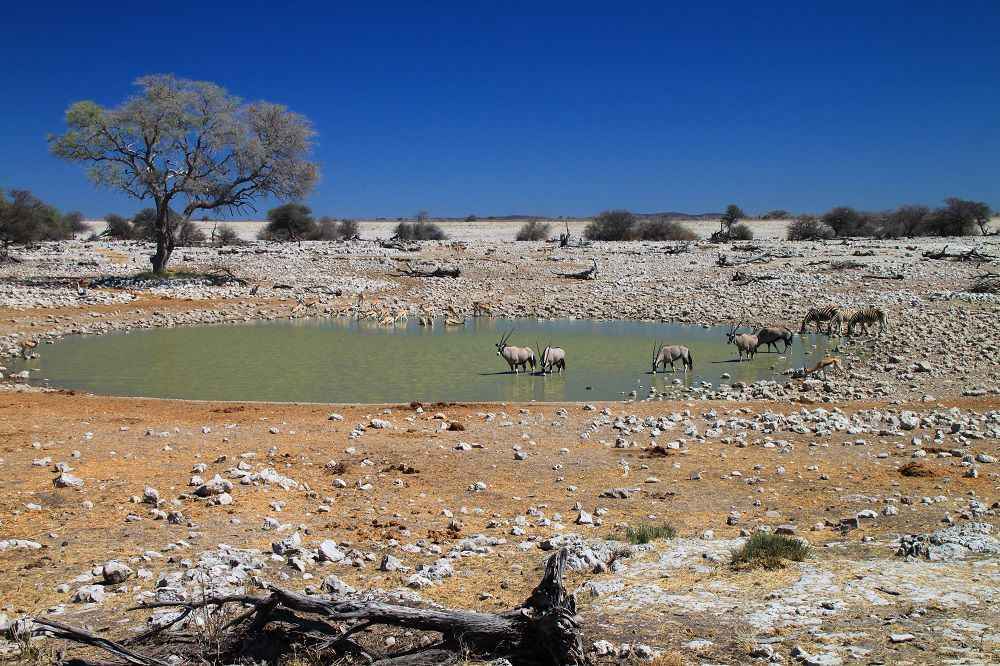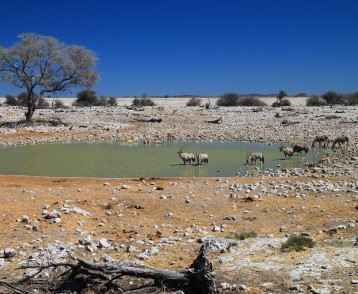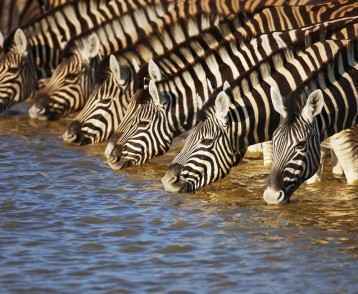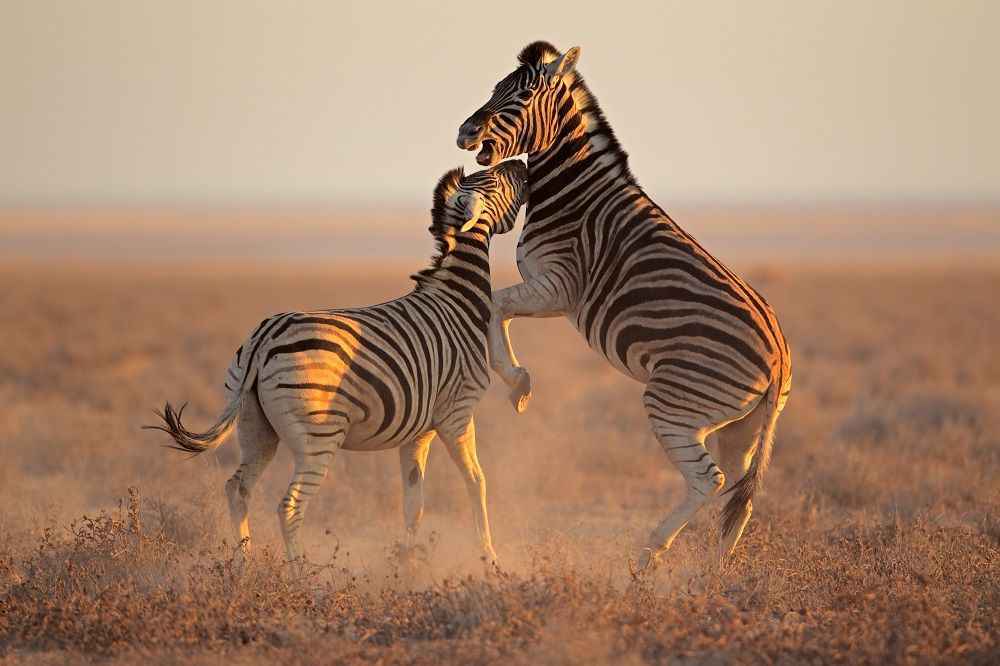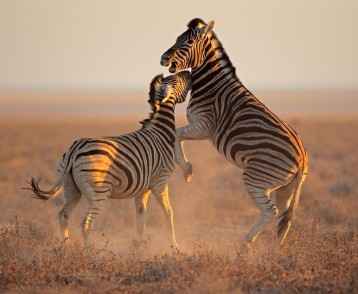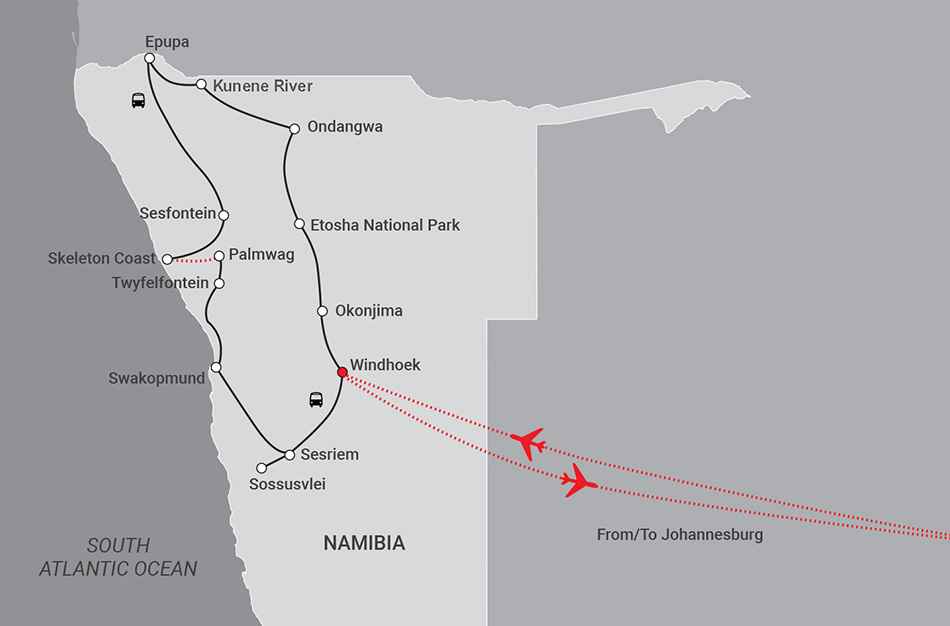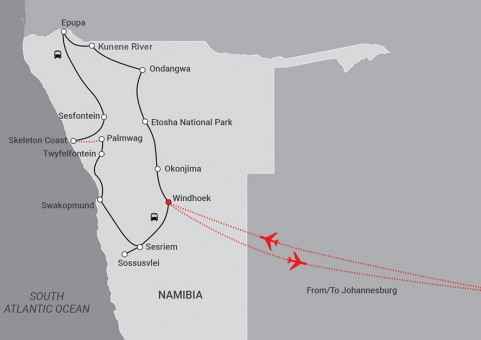Namibia: Masterpiece of Nature
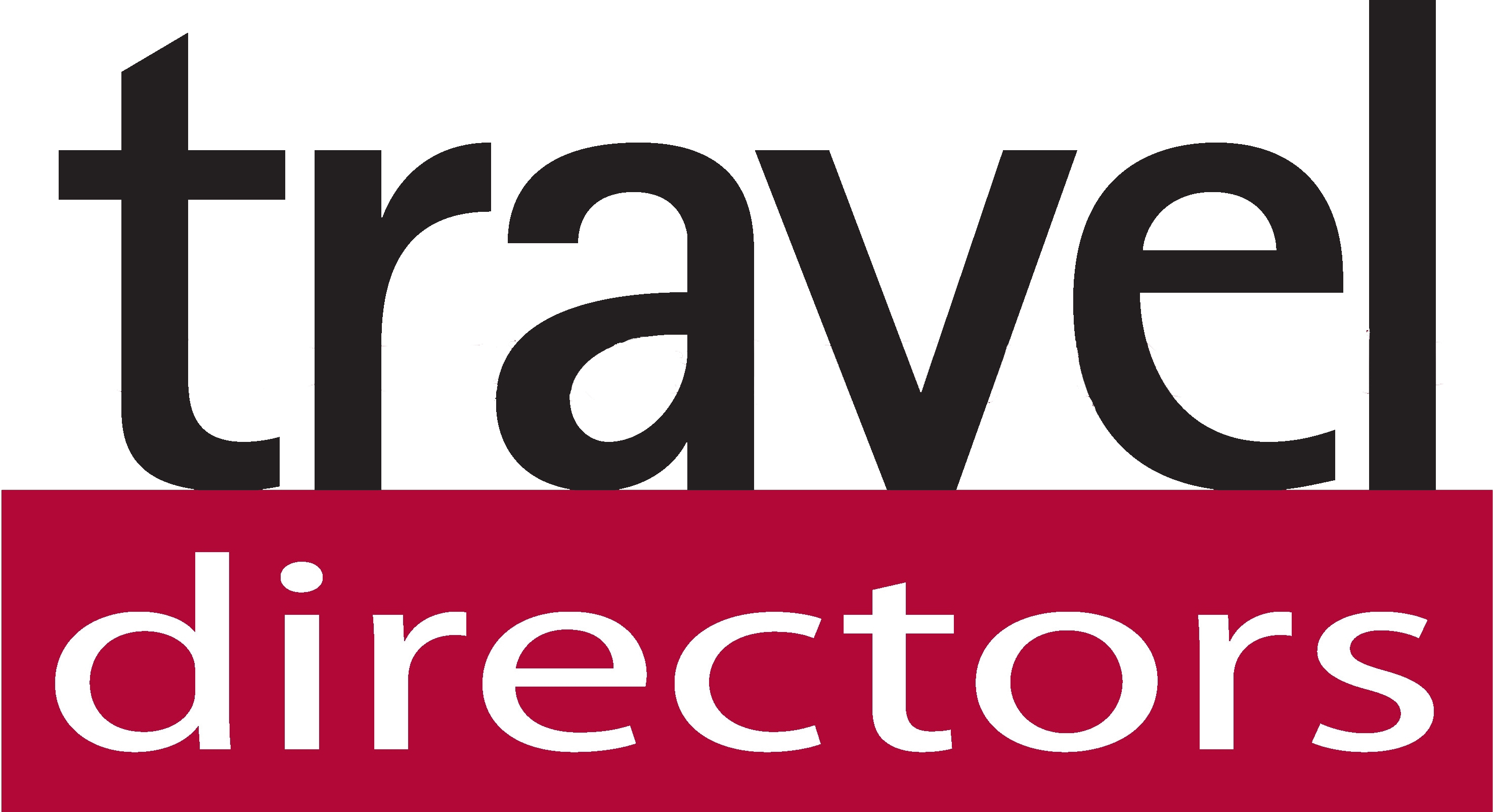
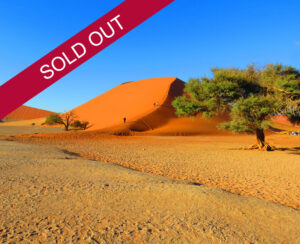
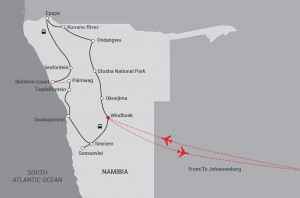
Namibia: Masterpiece of Nature is a spectacular 25-day journey to this diverse and sparsely populated land. From the salt pan in the north to the Skeleton Coast, and the huge, ruggedly beautiful region of Damaraland, Namibia is indeed, a masterpiece of nature!
Often referred to as ‘The land God made in anger’ Namibia could equally well be described as ‘nature’s wild child’. A vast but sparsely-inhabited country in the south-west of Africa, it is a country of starkly contrasting landscapes, from the gigantic sand dunes of the mighty Namib Desert to the wild Skeleton Coast, graveyard to numerous shipwrecks and home to the unique desert-adapted elephant. To the north lies Etosha National Park with its shimmering salt-pan and abundance of wildlife, including the magnificent black rhino. Windhoek, the capital, is situated in the country’s central highlands, and, like the coastal resort town of Swakopmund, is characterised by its German colonial architecture. Throughout the tour we travel by road in spacious and comfortable vehicles, and our accommodation along the way is in first-class lodges and safari camps. As with all Travel Directors’ tours you can expect the unexpected: we’ve built in plenty of surprises to make an already superb itinerary out-of-this-world!
Tour Fitness Level: Active
Namibia
- Animal tracking in Okonjima
- Two-night stay at Etosha National Park
- Visit the Ovambo people at Ongula Village
- Sundowner cruise at Ruacana
- Visit to a Himba settlement at Epupa
- Two-night stay at Shipwreck Lodge, Skeleton Coast
- See the desert-adapted elephant and black rhino at Damaraland
- Explore Namibia’s World Heritage Site of Twyfelfontein
- See the gigantic star-shaped dunes at Sossusvlei
Inclusions
- All flights between Australia and Africa
- All flights within Africa
- All ticketable air taxes (may be subject to change)
- All accommodation (twin share)
- Meals as specified
- Travel Directors’ tour leader throughout
- Expert local guides
- All entrance fees in specified sightseeing
- All local sightseeing as per itinerary
- Visas
- All tips and gratuities
Please note that whilst every effort will be made to adhere to the above pricing, currency fluctuations beyond our control can affect final tour costs. A booking form is to be completed by all passengers, and a non-refundable deposit of AUD $3,000 paid at the time of booking. All escorted tours are based on a minimum group size of 10 people travelling.
15/06/2024 Australia – Johannesburg
Depart from your chosen Australian airport on the flight to Johannesburg.
16/06/2024 Johannesburg – Windhoek (LD)
This morning we board our connecting flight to Windhoek.
Depart Johannesburg Airlink 4Z124, 10.40
Arrive Windhoek, 12.55
On arrival in Windhoek, we transfer to the Windhoek Country Club which is approximately 10kms out of town. On arrival we have lunch and then check in. In the evening enjoy a welcome dinner.
Windhoek Country Club
Windhoek
17/06/2024 Windhoek – Okonjima (BLD)
After breakfast we head north into the Waterberg region and on to Okonjima, which is situated about halfway between Windhoek and Etosha National Park. This is home to the Africat Foundation – a non-profit organisation committed to the long term conservation of Namibia’s large carnivores. Set in a 200 square km nature reserve, Africat provides an environment for previously non-releasable large carnivores to hone their hunting skills and learn to become self-sustaining, which gives them the opportunity to return to their natural environment. On arrival, we check into our first-class lodge and later participate in one of the many activities on offer such as radio tracking leopard from a game viewing vehicle.
Okonjima Plains Camp
Okonjima
18/06/2024 Okonjima (BLD)
Today we immerse ourselves fully in the activities of Africat. There is also an opportunity to join an easy walking trail to experience a day in the life of a Bushman, with the help of an experienced and informative guide. We also visit the Africat’s Information & Carnivore Care Centre where we learn about the organisations history and operations.
19/06/2024 Okonjima – Etosha National Park (BLD)
Leaving Okonjima we travel 250km north to the world famous Etosha National Park entering the reserve through the southern entry-point, the Andersson Gate which is named in honour of the explorer Charles Andersson who, together with explorer Francis Galton, became the first Europeans to record the existence of Etosha Pan in 1851. The park is a sanctuary for large herds of typical plains animals such as springbok, blue wildebeest and elephant, and it has the largest black rhino population in Africa. In the afternoon we enjoy a game drive before returning to the rest camp for dinner. Our Accommodation is in chalets overlooking the waterhole.
Okaukuejo Rest Camp
Etosha
20/06/2024 Etosha National Park (BLD)
Early this morning we set out to begin our exploration of the Etosha National Park which owes its unique landscape to the Etosha Pan, a vast shallow depression of some 5,000 square kilometres – so large it can be seen from space. The park is home to 114 species of mammals several of which are rare and endangered. Travelling east through the reserve towards the Von Lindequist Gate, we arrive at our home for the next two nights.
Mushara Lodge – Outpost
Etosha
21/06/2024 Etosha National Park (BLD)
Today we enjoy another full day in this incredibly diverse national park where we have the chance to see an abundance of wildlife. Etosha also has some 340 species of birds of which one third are migratory. Among the migratory species, the European bee-eater is possibly the most popular sighting. The game reserve is also home to the world’s largest bird, the ostrich, and the heaviest flying bird, the kori bustard.
22/06/2024 Etosha – Ondangwa (BLD)
After breakfast we travel through the Park, exiting at the King Nehale Gate, before continuing north-west to Ondangwa, 80km from the border with Angola. Ondangwa is a bustling town and one of the two main centres in the Oshana Region of northern Namibia. One of the highlights today is a visit to the Ongula Traditional Homestead, a village of the Ovambo people, the largest ethnic group in the country accounting for just over half the population. We have the opportunity to interact with the villagers and learn about their traditional customs and life style.
Protea Hotel
Ondangwa
23/06/2024 Ondangwa – Opuwo (BLD)
Today we head west through the dramatic scenery of the Kunene region to Opuwo.
Opuwo Country Lodge
Ruacana
24/06/2024 Kunene River – Epupa Falls (BLD)
This morning we drive westwards to Epupa, one of Namibia’s prime tourist destinations. The Epupa Falls, 190km upstream of the Kunene River mouth in an area known as Kaokoland, is a breath taking sight. Here the river fans out into a number of channels before cascading into a deep gorge. Nowhere else in the world do you find a waterfall contrasted with such wild and arid desert landscape. Watching the Epupa Falls and its white mists of water against the red colours of the surrounding desert and mountains is likely to be one the most beautiful and memorable experiences of our tour.
Omarunga Lodge
Epupa
25/06/2024 Epupa Falls (BLD)
The Kaokoland area is also home to the Himba people, a tribe of nomadic pastoralists who still cling to their traditions. The beautiful Himba women are noted for their intricate hairstyles and traditional jewellery. As Himba men and women wear few clothes, they rub their bodies with red ochre and fat to protect themselves from the sun, which gives their skin a rich red colour. Today we continue exploring the Kaokoland area, with its richly coloured rock walls, variety of trees and perennial water, and one of the major highlights is a visit to one of the many scattered Himba settlements.
26/06/2024 Epupa Falls – Khowarib Gorge (BLD)
Leaving Epupa we commence our journey south through the spectacular scenery of the Kunene region to Sesfontein, which derives its name from the six fountains in the vicinity. From here we continue on to our lodge nestled on the banks of the Hoanib River in the spectacular Khowarib Gorge.
Khowarib Lodge
Khowarib
27/06/2024 Khowarib Gorge – Skeleton Coast (BLD)
Today we set out for the Skeleton Coast, so-called because of the whalebones that peppered the shoreline when the whaling industry was booming, as well as, more ominously, the hulking carcasses of sea-wrecked ships buried in the sand and disintegrating in the water. More than 1,000 have met their end on the deadly coast where the vast desert sands come down to meet the sea. Our destination is Shipwreck Lodge located on the coast in the iconic Skeleton Coast National Park. Despite its rugged and remote location the camp has all the luxuries and amenities to ensure we have an unforgettable stay.
Shipwreck Lodge
Skeleton Coast
28/06/2024 Skeleton Coast Area (BLD)
Today we explore the area around the Hoarusib River. We visit the clay castles, a natural geological formation where brown hyena are often encountered. We could also spot desert adapted elephant and lions.
29/06/2024 Skeleton Coast – Damaraland (BLD)
After breakfast we begin our drive through the dramatic landscapes and into Damaraland.
Palmwag Lodge
Damaraland
30/06/2024 Damaraland – Twyfelfontein (BLD)
Staying in Damaraland, we travel about 100km south to begin our two-day exploration of the Twyfelfontein area. Meaning ‘Doubtful Mountain’ this area was the first site in Namibia to be granted UNESCO World Heritage listing, for its remarkable rock engravings estimated to be around 6,000 years old. We visit a massive open air art gallery, which is home to more than 2,000 rock paintings which are the work of San hunter-gatherers who lived in the region long before the influx of Damara herders and European colonists. Our home for the next two nights is the beautiful Mowani Mountain Camp where the luxury chalets are dwarfed by massive ochre boulders and the views are sensational!
Etendeka Mountain Camp
Twyfelfontein
01/07/2024 Twyfelfontein Area (BLD)
Today we further explore this extraordinary area visiting the Burnt Mountain and the Organ Pipes. The beautiful Organ Pipes are a fascinating geological formation of long columns resembling those of a church organ, some rising up to 5m high and strikingly rich in rusty colours. Thought to be the result of the Gondwanaland breakup, fractures and cracks were formed as the dolomite columns cooled approximately 120 million years ago.
02/07/2024 Twyfelfontein – Swakopmund (BLD)
Leaving Twyfelfontein this morning we continue our journey south towards the coastal resort town of Swakopmund. Travelling along the coast road we arrive at our lodge where we will spend the next three nights. Situated right on the beach with magnificent views of the sea from each room, our lodge also has uninterrupted views of the Atlantic from the exquisite second-floor restaurant, ‘The Wreck’.
Beach Lodge
Swakopmund
03/07/2024 Swakopmund (BLD)
Swakopmund has a distinctly German atmosphere with German colonial-style buildings dating back to the early 1900s still dominating the town. Today we take a leisurely walk through the town which is famous for its hand-crafted jewellery, leather goods and mouth-watering confectionery found in the little cafes. We also take a dolphin cruise out of Walvis Bay, a thrilling half day excursion where we see dolphins leaping from the water and inquisitive seals swimming right up to the boat. There’s plenty of birdlife too, with flamingos, cormorants and pelicans common in the area.
04/07/2024 Swakopmund (BLD)
After breakfast we board 4WD vehicles and head into the dunes on the ‘Living Desert’ tour. We stop continuously to look for animal tracks on the dunes (known locally as reading the bushman paper), to determine which animals were active the previous night and hopefully, to spot some of them. This excursion concentrates on discovering some of the smaller desert-adapted creatures living in the dunes, such as geckos, rolling spiders, scorpions, lizards, snakes, chameleons, skinks and beetles. For the more adventurous, there is the opportunity to go quad bike riding or sand boarding in the dunes.
05/07/2024 Swakopmund – Sesriem – Sossusvlei (BLD)
Leaving Swakopmund we drive south to Sesriem Canyon in the Namib Naukluft Park. The top attraction in the park, and second only to Etosha, is Sossusvlei – renowned for its majestic star shaped dunes the largest of which was measured at 325 metres high. On arrival at Sossuvlei we check into our luxury lodge with unspoilt views of the surrounding area.
Dead Valley Lodge
Sossusvlei
06/07/2024 Sossusvlei Area (BLD)
This morning we visit Sossusvlei and then take a leisurely drive through the area where hopefully we encounter ostrich, springbok and gemsbok on the desert plains. The area is also home to brown hyena, black-backed jackal and bat-eared fox. In the late afternoon we travel out to the Sesriem Canyon, home to Hartman’s mountain zebra, klipspringer and baboons before returning to the lodge for dinner.
07/07/2024 Sossusvlei – Windhoek (BLD)
After breakfast we drive back through magnificent landscapes to Windhoek. On arrival we check into our hotel and in the evening we enjoy a farewell dinner.
Windhoek Country Club
Windhoek
08/07/2024 Windhoek – Johannesburg – Australia (B)
After breakfast we transfer to the airport for our flight to Johannesburg.
Depart Windhoek Airlink 4Z125, 13.35
Arrive Johannesburg, 15.35
In Johannesburg we connect with our onward flight to Australia.
09/07/2024 Arrive Australia
Arrive into Sydney or Perth and connect onto your chosen Australian port.
Why is the tour graded as ‘Active’?
While not a physically active trip, the tour includes some early starts and some long driving days. The mode of transport on this tour is a 4WD safari vehicle and a number of the roads are gravel, as well as there being some off-road driving. There is some walking amongst the rocks at the site of the rock paintings, and some walking through sand dunes.
If I travel alone do I have to pay the single supplement?
If you wish to have sole use of a hotel room on the tour, you will need to pay the single supplement. If you are travelling alone but willing to share a room, we will endeavour to match you up with another solo traveller of the same gender. We cannot guarantee that a share-match can be provided, and in the event that this cannot be arranged at the time of final payment, you will need to pay the single supplement.
How long is the flight from Australia to Johannesburg?
Flying time from Perth to Johannesburg is 11 hours. From Sydney to Johannesburg is 14 hours and 20 minutes. Due to the arrival time, travellers arriving in Jo’burg from Sydney will have an overnight stay in a hotel at the airport before catching the flight to Windhoek.
Is personal security a problem on this tour?
Security is not a big problem. However in Windhoek and Swakopmund we remind our guests of the need to take sensible precautions. These include not wearing ostentatious jewellery, not showing or counting money in public, and not going to certain areas at night. Basically it’s a case of using common sense, particularly in large cities.
What kind of clothing should I take for game drives?
Comfortable clothing in earthy colours is best. Layering is recommended as it can be quite cool on early morning and evening game drives.
How much spending money do I need for the entire trip?
Because almost everything is included, we would suggest an amount of USD $500 per person as being ample for the whole journey.
Are credit cards acceptable?
ATMs are available in Windhoek and Swakopmund for cash withdrawals and most curio shops at the lodges and scenic sites will take credit card payments for purchases. While ATMs are unavailable for quite a portion of this tour, it should not cause difficulties, as practically everything is included.
Do I need vaccinations for this journey?
Tetanus should always be up to date and medication for malaria prevention is highly recommended. Insect repellent is essential. You should also seek advice from your doctor.
Is the water safe to drink en route and what is the general standard of hygiene?
We err on the side of caution on all of our tours and advise travellers to drink only bottled water. This is easy to obtain everywhere. The standard of hygiene in Namibia is surprisingly high along the entire route.
What is the climate like at the time we travel?
The climate varies greatly along the route. It is generally warm and dry throughout, although it can be very cool early morning and in the evening on game drives. In the north of the country, in the Kunene River region and at Epupa Falls, it is very hot and often remains very warm overnight. In Swakopmund it can be cold due to the mists and winds coming off the Atlantic Ocean. A warm fleece or jacket and scarf are essential, and light clothing for the warmer days.
If I want to travel to Africa before or after the group departs is this possible?
It is possible, with reasonable notice, to fly to Johannesburg ahead of the group or stay on after the group has departed.
Do I need a visa for Namibia?
No.
A lot of companies have many expensive optional extras on their tours. Do you?
We don’t believe in a lot of expensive ‘optional tours’. Our itineraries are designed to make the best possible use of time and to include all the must-see sights, plus additional surprises. Therefore practically everything is included in the tour cost.
What is the standard of hotels like on this tour?
The hotels on this trip are all of a high standard, between 4 and 5-star and are well-located for our activities. The safari lodges we use are very high quality with good facilities.
What currency should I take?
The currency for this journey is US dollars. They should be in low denominations, clean and undamaged.
Are internet facilities available en-route?
Internet facilities and wifi are available in some of the hotels and lodges, though not all. Due to the remote nature of some of the lodges at which we stay, wifi may be limited to communal areas, and in some cases is not available.
Do mobile telephones work?
Telstra and Optus mobiles work along much of the route, although we pass through a number of areas where there is no coverage. You will need to ensure you have global roaming and a tri-band phone. Contact your provider for further details.
How much should we tip the guides and porters?
There is no need to tip guides or porters as this is included in the tour cost.
Listed below is a selection of books which you may wish to read prior to, or during, your journey.
Africa: A Biography of the Continent
John Reader
A History of Namibia
Marion Wallace
Histories of Namibia: Living Through the Liberation Struggle
Told to Colin Leys and Susan Brown
The Sheltering Desert
Henno Martin
An Arid Eden
Garth Owen-Smith
Skeleton Coast
Amy Schoeman
An Elephant’s Life
Caitlin O’Connell
The Healing Land: A Kalahari Journey
Rupert Isaacson
The Lost World of the Kalahari
Laurens van der Post
